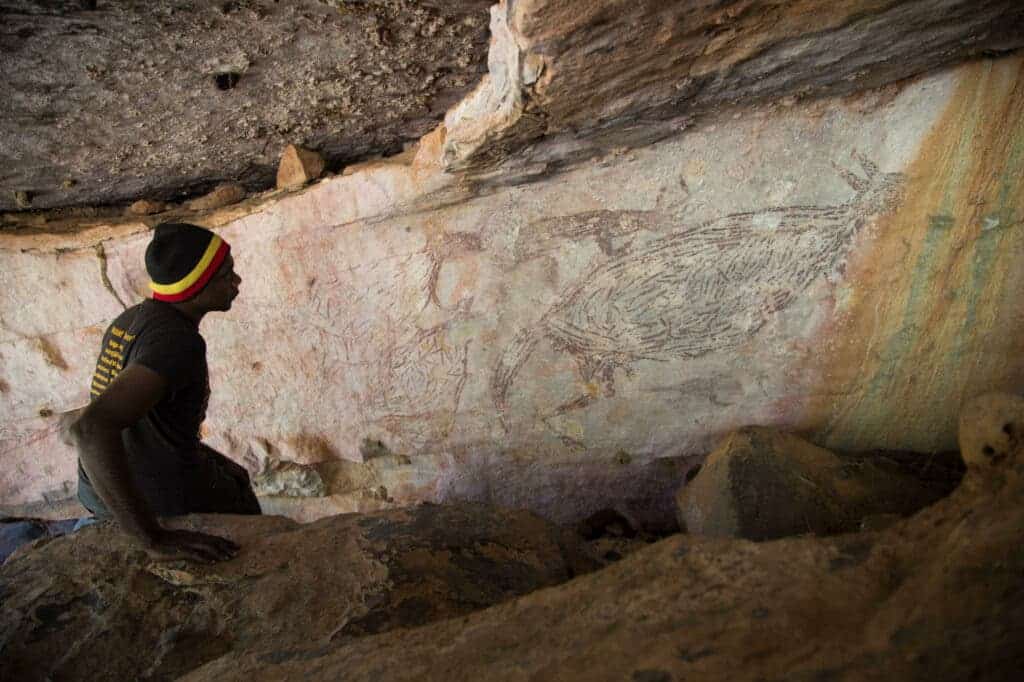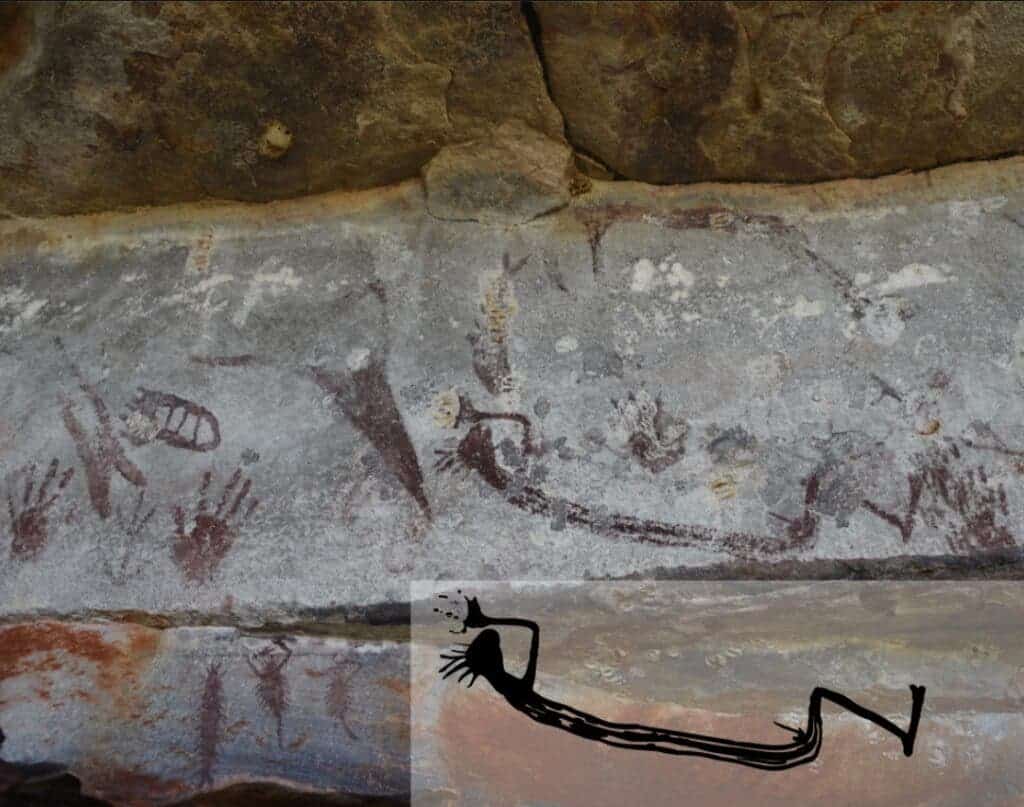The oldest-known Australian Aboriginal rock painting was created over 17,000 years ago, a new paper shows. The rock painting showcasing a kangaroo-like animal was discovered among dozens of other paintings and was dated with the aid of ancient wasp nests.

In 2010, Damien Finch was hiking through Australia’s bushland when he came across something stunning: Aboriginal cave art. He was intrigued and saddened that not much was known about the art and the civilization that made it — not even when they were painted. So he decided to rectify that and started studying them.
“I first saw these paintings up close during a hike in a remote part of the Kimberley in 2010. It is astounding to see so much evidence of ancient human cultural activity in an environment without any of the other signs of human activity that we expect such as roads, power poles, buildings and plastic rubbish! It made me very curious to understand more about the paintings and the culture that created them,” Finch tells me in an email.
In a new study, Finch and colleagues worked with Aboriginal Traditional Owners from the Kimberley region in Western Australia to analyze the rock art specimens.
Dating rock art is really hard. Aboriginal art uses iron oxide pigments and no organic material — which means any radiocarbon analysis isn’t possible. So instead, Finch got creative (and a bit lucky). He found that some of the rocks nearby contained the remains of ancient wasp nests, which can be carbon dated. He found these mud wasp remains both under and above the painted surfaces — so by dating both of these, he could pincer in on the age of the art.

It’s not the first time the method has been used, Finch says. It was used as early as 1997 when pollen extracted from a wasp nest (not over rock art) was dated, but it was less than 2,000, the researcher says. Now, researchers have adapted the technique and made it more reliable, even for small wasp remnants.
“By studying wasps building nests and then analyzing modern nests back in the laboratory, we determined that they frequently contained charcoal fragments. So we concentrated on methods to date charcoal rather than pollen which was less abundant. Radiocarbon dating has been used to date charcoal for more than 50 years and has been the mainstay of archaeological dating. Our radiocarbon dates on wasp nests built on top of paintings tell us that the painting must be older than the age of the nest. Similarly, if the nest is underneath the painting the age of the nest provides a maximum age for the painting.”
Overall, they found 27 such remains above and below 16 rock paintings. The paintings include a snake, a lizard-like figure, and three macropods (a family of marsupials including kangaroos, wallabies, and quokkas). However, one painting of a kangaroo (or a kangaroo-like creature) was dated to between 17,500–17,100 years ago, making it the oldest dated painted figure in Australia to date.

Unfortunately, however, not much is known about the people who created this art. Not much archaeological information has been retrieved, but Finch hopes we can learn something from this art.
“I don’t know that we can say too much about a culture as it was 17,000 years ago. We struggle to understand the culture at the time of the pyramids and that was only 5,000 years ago. But now, for the first time, we can combine what we see in the paintings with what we know about the environment as it existed at the same time, around the end of the Last Ice Age. Science can tell us about the prevailing climate and sea-levels as well as the plants and animals available at that time. I am sure future researchers will draw these threads together with what we now know about the age of the rock art to come up with further insights about the lives of these ancient people,” Finch tells ZME Science.
The kangaroo is unlikely to be Australia’s oldest painting — it’s only the oldest one we’ve found so far. Considering that humans reached Australia some 65,000 years ago, the chances are more ancient art is just waiting to be discovered.
In the meantime, this is a sobering reminder of how much we’ve yet to learn about these ancient peoples. Bit by bit, Finch hopes to fill in the gaps.
“It was surprising just how few records existed and how little was known about them in the non-indigenous community. Through our research, we aim to improve this situation.”
Journal Reference: Ages for Australia’s oldest rock paintings, Nature Human Behaviour (2021). DOI: 10.1038/s41562-020-01041-0


